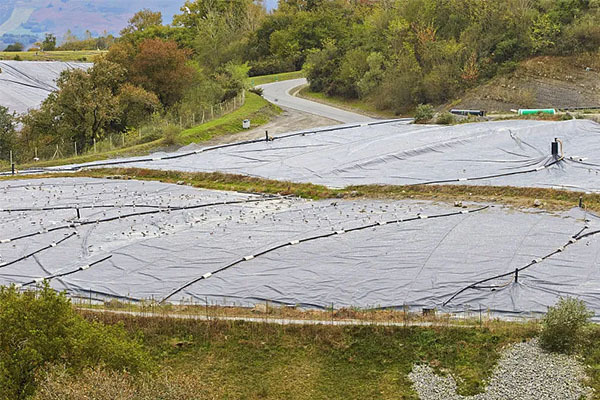The Essential Guide to High-Density Polyethylene Geomembrane: Things You Need to Know
Release time:
2025-05-31
Discover important considerations for using HDPE geomembrane in your projects. Learn tips, tricks, and best practices!
What is High-Density Polyethylene Geomembrane?
Alright, let’s kick things off by breaking down what HDPE geomembrane actually is. Short for High-Density Polyethylene geomembrane, this material is a superstar in the world of containment solutions. It’s used primarily for lining landfills, ponds, and even waste treatment facilities. Thanks to its durable nature, it can withstand a variety of environmental stressors, making it a go-to choice for many engineering projects.
Why Choose High-Density Polyethylene Geomembrane?
So, you might be wondering, why should you opt for HDPE geomembrane over other materials? Well, let’s break it down:
- Durability: This stuff is tough! With a lifespan that can exceed 50 years, it’s built to last.
- Resistance: HDPE is resistant to chemicals, UV rays, and even punctures. Talk about a resilient material!
- Cost-effective: Although the initial investment might be higher, the long-term savings in maintenance and replacements make it worth it.
Key Considerations When Using High-Density Polyethylene Geomembrane
Now that we’ve covered the basics, let’s dive into some of those important considerations or 注意事项 you should keep in mind when working with HDPE geomembrane:
1. Site Preparation is Key
First off, you gotta prep that site like a pro! Any debris, sharp objects, or uneven surfaces can compromise the integrity of your geomembrane. A clean, smooth base is crucial for a successful installation.
2. Temperature Matters
Who would’ve thought that temperature could play such a significant role? HDPE geomembrane is best installed in moderate temperatures. Extreme heat can cause the material to warp, while cold conditions can make it brittle. So, keep an eye on the weather!
3. Quality Control is Non-negotiable
Don’t skimp on quality control! Testing the geomembrane for thickness and integrity before installation is a must. It’s like checking the ingredients before whipping up a gourmet meal. You want to ensure everything is top-notch!
4. Proper Installation Techniques
When it comes to installation, technique matters. Always follow best practices and guidelines. Overlapping seams, for instance, should be welded correctly to prevent leaks. Think of it as sealing an envelope — you want to make sure it’s secure!
5. Regular Maintenance
Just like you’d take care of your car with regular oil changes, your HDPE geomembrane needs some love, too. Regular inspections can help catch any potential issues before they turn into major headaches.
Final Thoughts
In a nutshell, HDPE geomembrane is a reliable solution for various containment needs, but it’s not without its considerations. From site prep to proper installation and maintenance, being aware of these factors will ensure your project is a resounding success. So go ahead, embrace this fantastic material, and make your next project a breeze!
In the end, it’s all about making informed choices. With the right knowledge in your back pocket, you’ll be well-equipped to tackle any challenges that come your way. Happy building!






